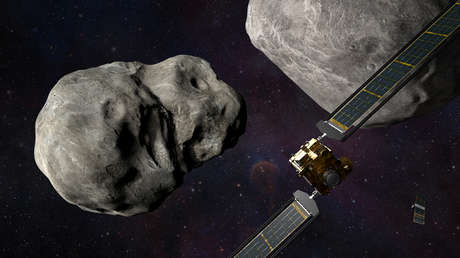[ad_1]
Published:
Over the next 12 years, Lucy is ready to fly, with one main ballot asteroid and seven Trojan asteroids, the agency’s first mission being to explore several different asteroids to explore the agency’s first mission.
NASA has successfully launched the Lucy Space Mission this Saturday, which will study Jupiter’s remote Trojan asteroids for the next 12 years, with the goal of shedding light on the origin of the solar system, according to a statement posted on its website.
Launched in Mission Space is a United Launch Alliance (ULA) by Space Atlas V rocket from Space Launch Complex 41, which is located at Cape Canaveral Space Force Station (Florida, USA).
In the villa of mystery
It is planned throughout the world The next 12 years Lucy is flying with one of the main ballot asteroids and seven Trojan asteroids, making it the agency’s first mission as many different to many different asteroids.
“Lucy demonstrates NASA’s enduring quest to get out and explore the universe for exploration and science. Think of the universe better And our place within it, “explained NASA Director Bill Nelson.
The text notes that this mission will allow scientists to share trojan asteroids with Trojan asteroids that are shared by the Sun’s Moon orbit. They should be believed because they are the remains of material that plan to be such a large planet. They can read up to date information about the formation and evolution of our solar system.
“Diamonds in the sky”

“There will still be many more years before we get to Trojan Asteroids, but these things are worth the wait and all because of their great scientific value. They are like diamonds in the sky,” said Hal Levison, Lucy’s. Principal Investigator said.
The spacecraft is already traveling, almost already 108,000 km per hour For a review of a path that orbits the sun and returns it to Earth in October 2022, it will have to be done. In 2025 the steroid reached Donald JohanssonGeneral Chat Chat Lounge After two and a half years, it has been determined that Trojan Asteroids first hit Jupiter.
“Today we’re celebrating this incredible milestone and waiting for new discoveries to be made,” said Donia Douglas-Bradshaw, Lucy Project Leader at NASA’s Goddard Space Flight Center.
Do you find it interesting? Leave your comment in the comments!